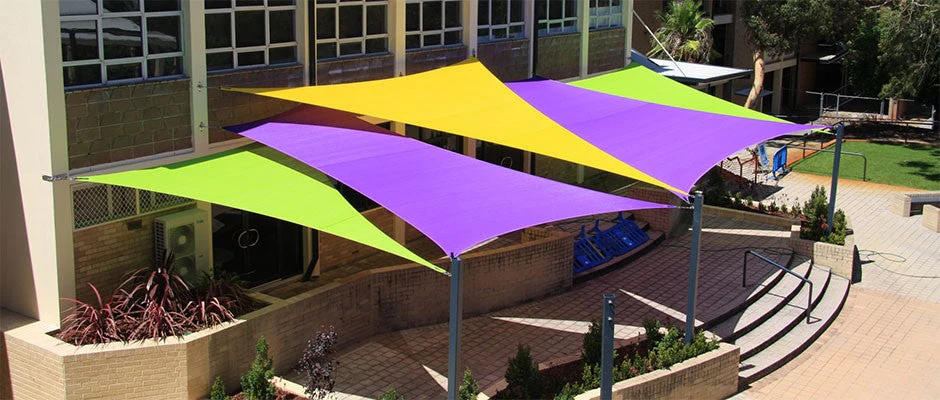Excessive exposure to ultraviolet radiation poses significant health risks that affect millions of people worldwide. With skin cancer rates climbing globally and heat-related illnesses becoming increasingly common, effective sun protection has evolved from a luxury to a necessity. Traditional shade solutions often fall short of providing adequate coverage or fail to withstand challenging weather conditions that characterise many climates.
Modern tensioned fabric structures have emerged as a superior solution for protecting against harmful solar radiation whilst maintaining aesthetic appeal. These installations provide extensive coverage areas that traditional umbrellas and awnings cannot match, making them particularly valuable in regions with intense sunlight. The growing popularity of shade sails Sydney installations demonstrates how communities with extreme UV exposure have embraced these innovative protection systems.
The science behind effective sun protection extends far beyond simply blocking direct sunlight. Quality shade installations must address reflected radiation, temperature reduction, and air circulation to create truly comfortable and safe outdoor environments. Understanding these factors helps explain why tensioned fabric structures have become the preferred choice for schools, parks, and residential properties worldwide.
Understanding UV Radiation and Health Risks
Ultraviolet radiation consists of three distinct wavelengths: UV-A, UV-B, and UV-C. Whilst Earth’s atmosphere filters out most UV-C radiation, UV-A and UV-B rays reach the ground and cause significant damage to human skin and eyes. UV-B radiation burns the skin’s surface layers, whilst UV-A penetrates deeper, causing long-term cellular damage that accelerates ageing and increases cancer risk.
The World Health Organisation reports that skin cancer rates have tripled over the past three decades, with over 1.5 million new cases diagnosed annually worldwide. Australia leads global skin cancer statistics, with two-thirds of residents developing some form of skin cancer before age 70. These alarming figures highlight the urgent need for effective sun protection strategies in outdoor environments.
Heat-related illnesses present additional risks during extended sun exposure. Heat exhaustion, heat stroke, and dehydration can occur rapidly when body temperature regulation systems become overwhelmed. Children and elderly individuals face heightened vulnerability due to less efficient thermoregulation and increased sensitivity to temperature extremes.
How Shade Structures Provide Protection
Quality shade installations block up to 98% of harmful UV radiation depending on fabric density and composition. High-density polyethylene fabrics with tight weaves provide maximum protection, whilst maintaining air permeability that prevents heat buildup underneath the covered area. This breathability distinguishes fabric structures from solid roofing materials that can create uncomfortable hot spots.
Temperature reduction represents another crucial benefit of effective shade systems. Studies conducted in Australian schools showed that playground temperatures dropped by 6-8 degrees Celsius under quality shade installations compared to exposed areas. This temperature differential significantly improves comfort levels and reduces heat stress risks for children and adults engaged in outdoor activities.
Reflected radiation from concrete, sand, and water surfaces can contribute up to 15% of total UV exposure. Properly positioned shade structures reduce this reflected radiation by creating larger protected zones that extend beyond the direct shadow area. Multiple shade installations can create overlapping protection that eliminates dangerous exposure gaps.
Fabric Technology and Protection Levels
Modern shade fabrics incorporate advanced technologies that maximise UV protection whilst maintaining durability and visual appeal. High-density polyethylene materials treated with UV-resistant compounds maintain their protective properties for 10-15 years under normal usage conditions. These treatments prevent fabric degradation that reduces protection effectiveness over time.
Fabric colour influences protection levels, with darker colours generally providing superior UV blocking capabilities. However, lighter colours reflect heat more effectively, creating cooler environments underneath. This trade-off requires careful consideration based on specific climate conditions and intended usage patterns.
Mesh density ratings indicate the percentage of UV radiation blocked by specific fabrics. Residential applications typically utilise 90-95% UV block ratings that provide excellent protection whilst allowing beneficial air circulation. Commercial and educational installations often specify 95-98% blocking for maximum safety in high-exposure environments.
Installation Factors That Maximise Protection
Proper positioning and angle optimisation significantly impact protection effectiveness. Shade structures should cover areas during peak UV exposure hours between 10am and 3pm when radiation levels reach dangerous intensities. East-west orientation provides optimal morning and afternoon coverage, whilst north-south positioning maximises midday protection.
Height considerations affect both protection area and air circulation patterns. Installations positioned 3-4 metres above ground level create comfortable airflow that prevents heat stagnation whilst providing adequate headroom for various activities. Lower installations may create claustrophobic feelings whilst higher structures can allow excessive radiation penetration at oblique angles.
Multiple fabric layers or overlapping installations provide enhanced protection in extremely high-radiation environments. This approach proves particularly valuable in tropical and desert climates where single-layer protection may prove insufficient during peak exposure periods.
Global Applications and Success Stories
Educational institutions worldwide have implemented comprehensive shade programmes that dramatically reduce student sun exposure during outdoor activities. Research conducted across multiple countries demonstrates that students spend 40% more time in shaded playground areas compared to unprotected spaces, indicating both comfort and safety improvements.
Public health initiatives in high-UV countries have prioritised shade installation in parks, recreational facilities, and public gathering spaces. These programmes report significant reductions in heat-related emergency calls and improved community engagement with outdoor activities.
Residential applications continue expanding as homeowners recognise the health and lifestyle benefits of protected outdoor living spaces. Property values in sunny climates increasingly reflect shade infrastructure quality, with well-designed installations adding substantial value to real estate investments.
Effective sun protection through quality shade installations represents a crucial public health strategy that addresses rising skin cancer rates whilst enabling safe outdoor activity enjoyment. As UV radiation levels continue increasing due to ozone depletion and climate change, communities worldwide must prioritise comprehensive shade solutions that protect current and future generations from preventable sun-related health risks.



